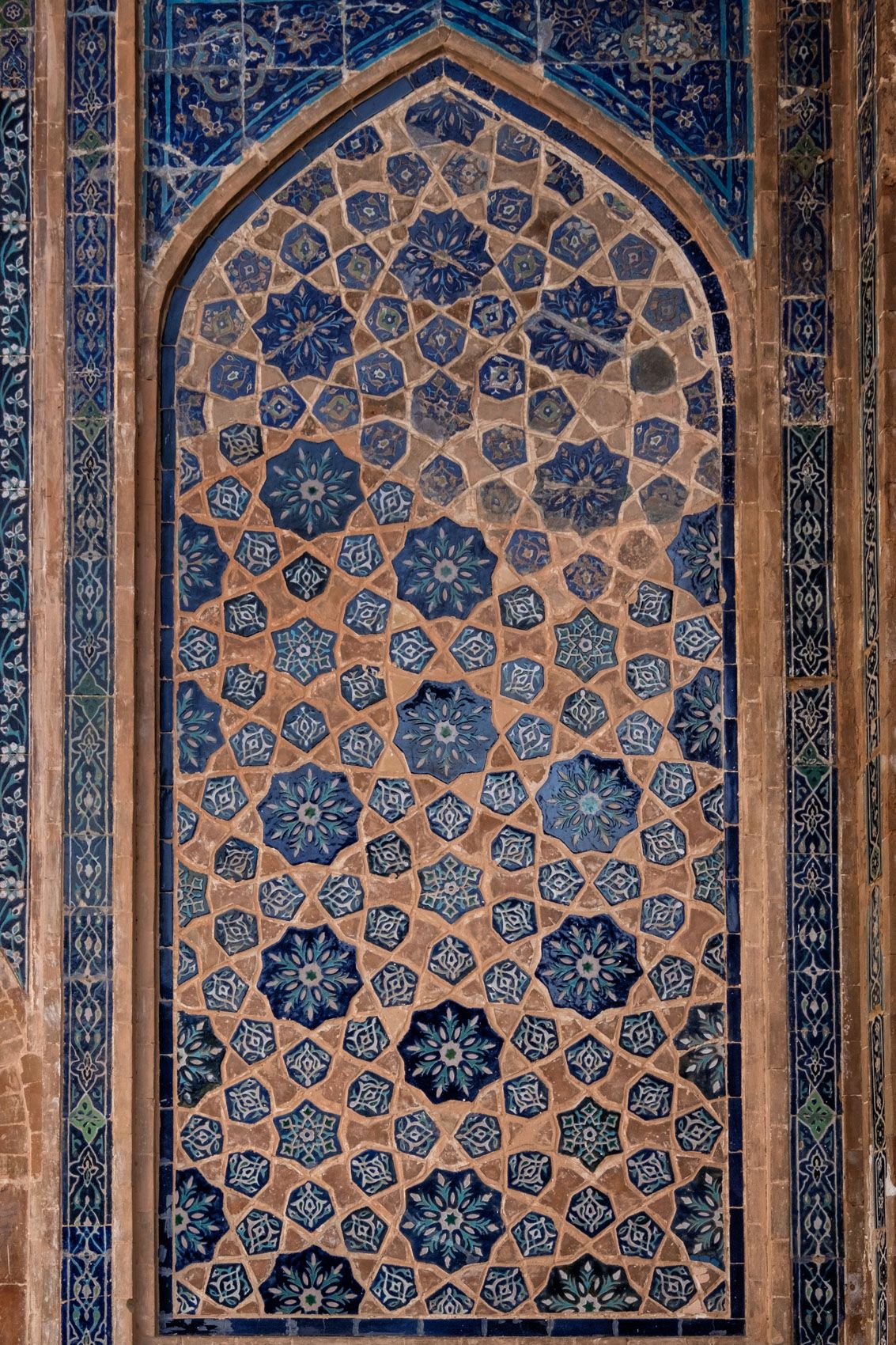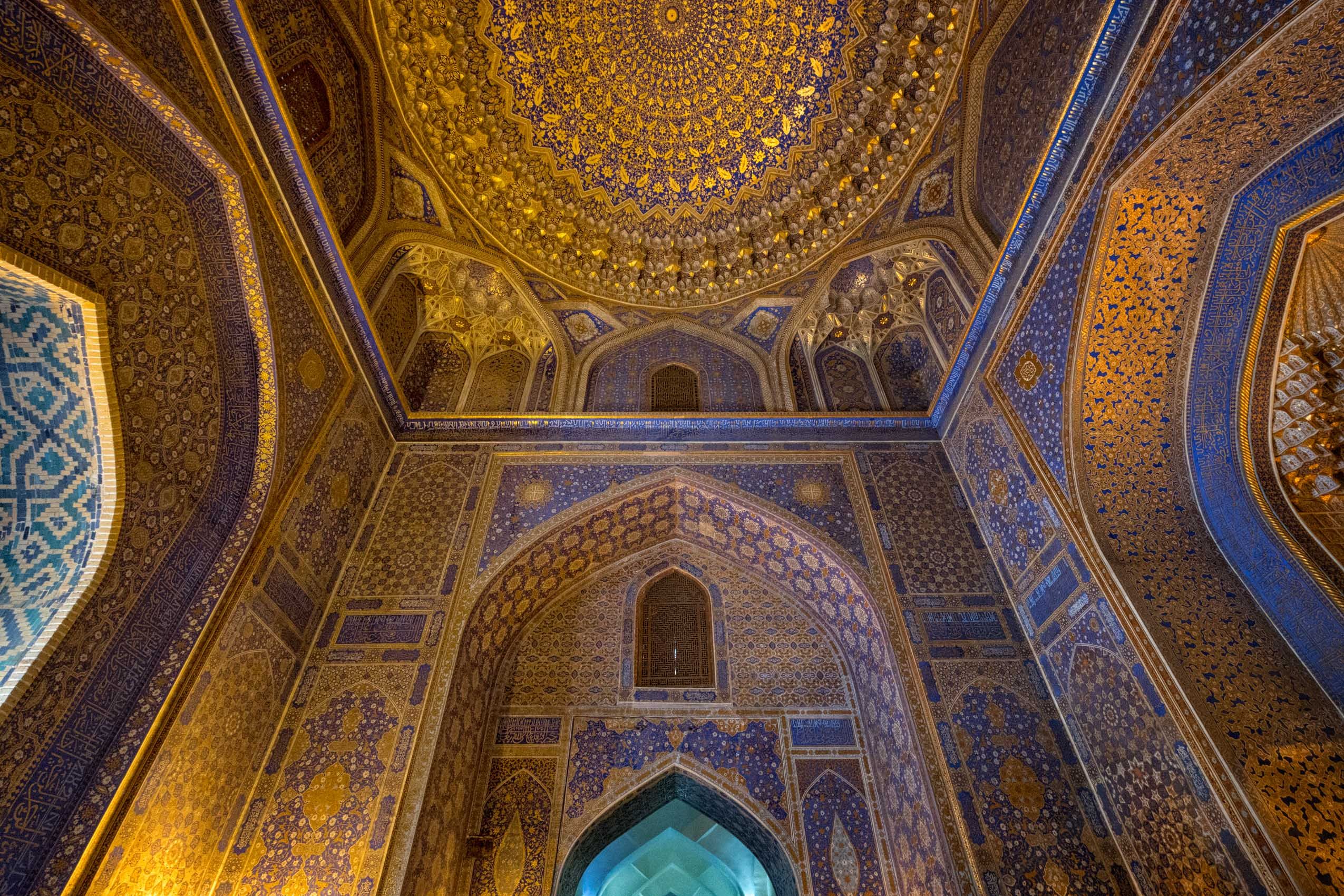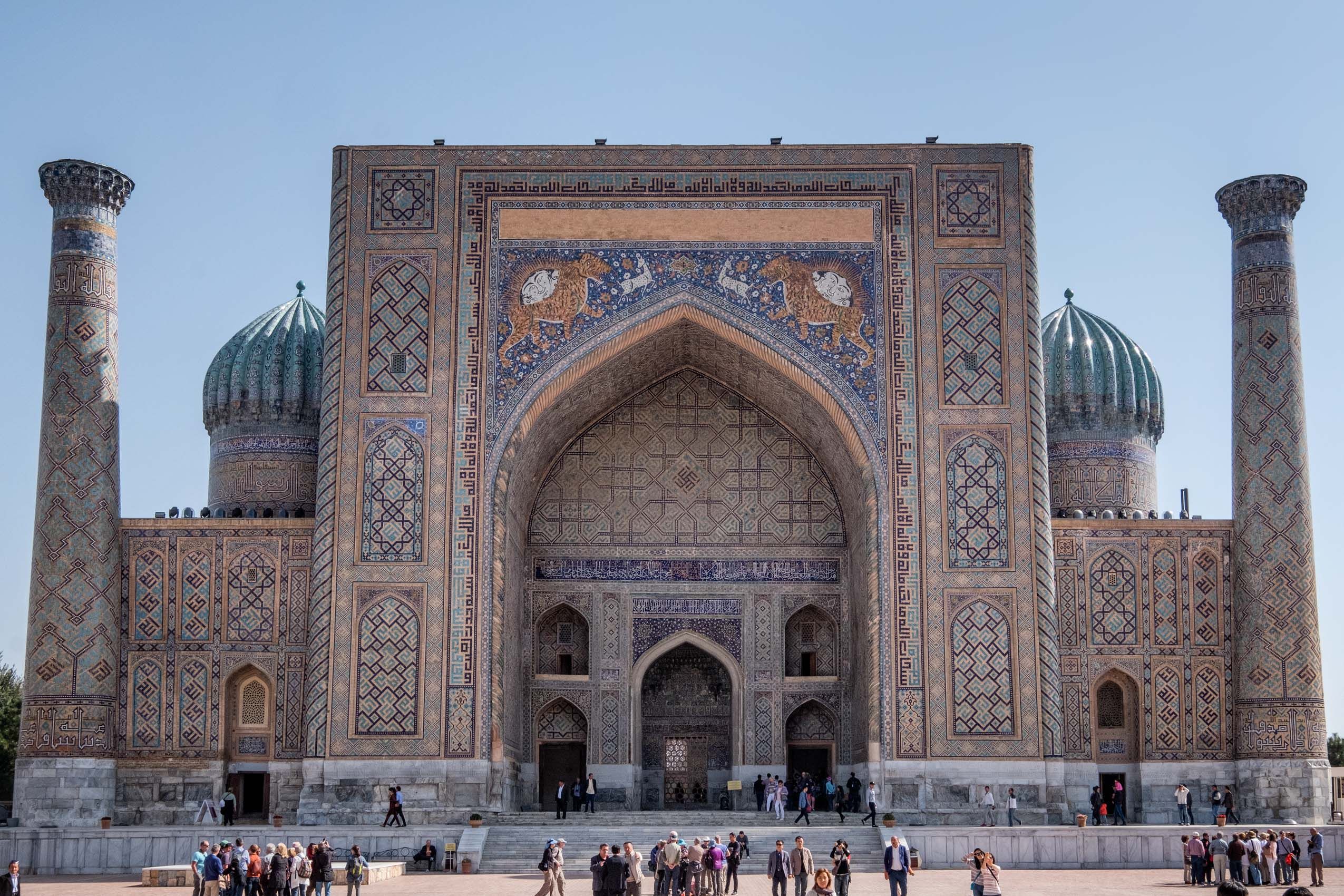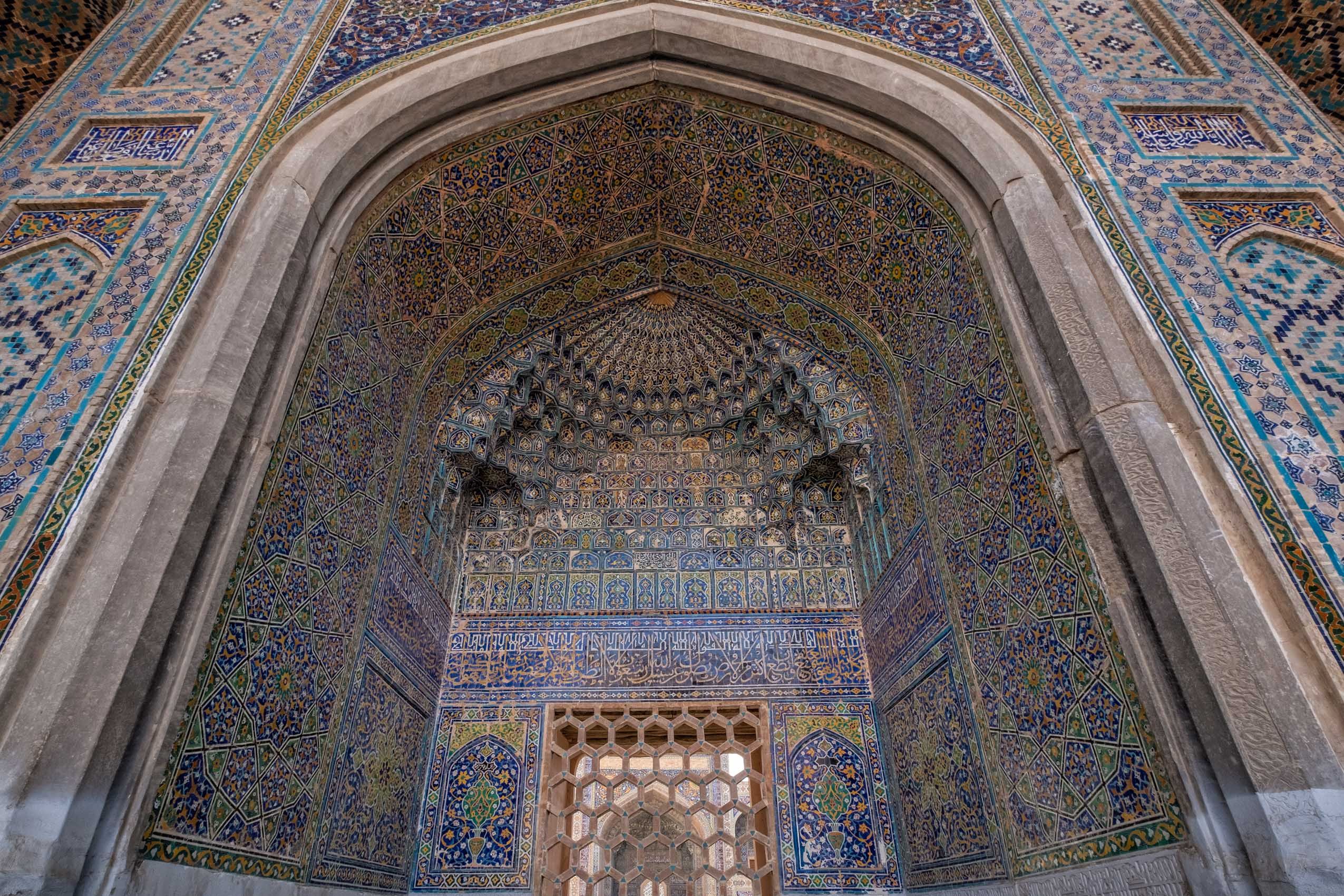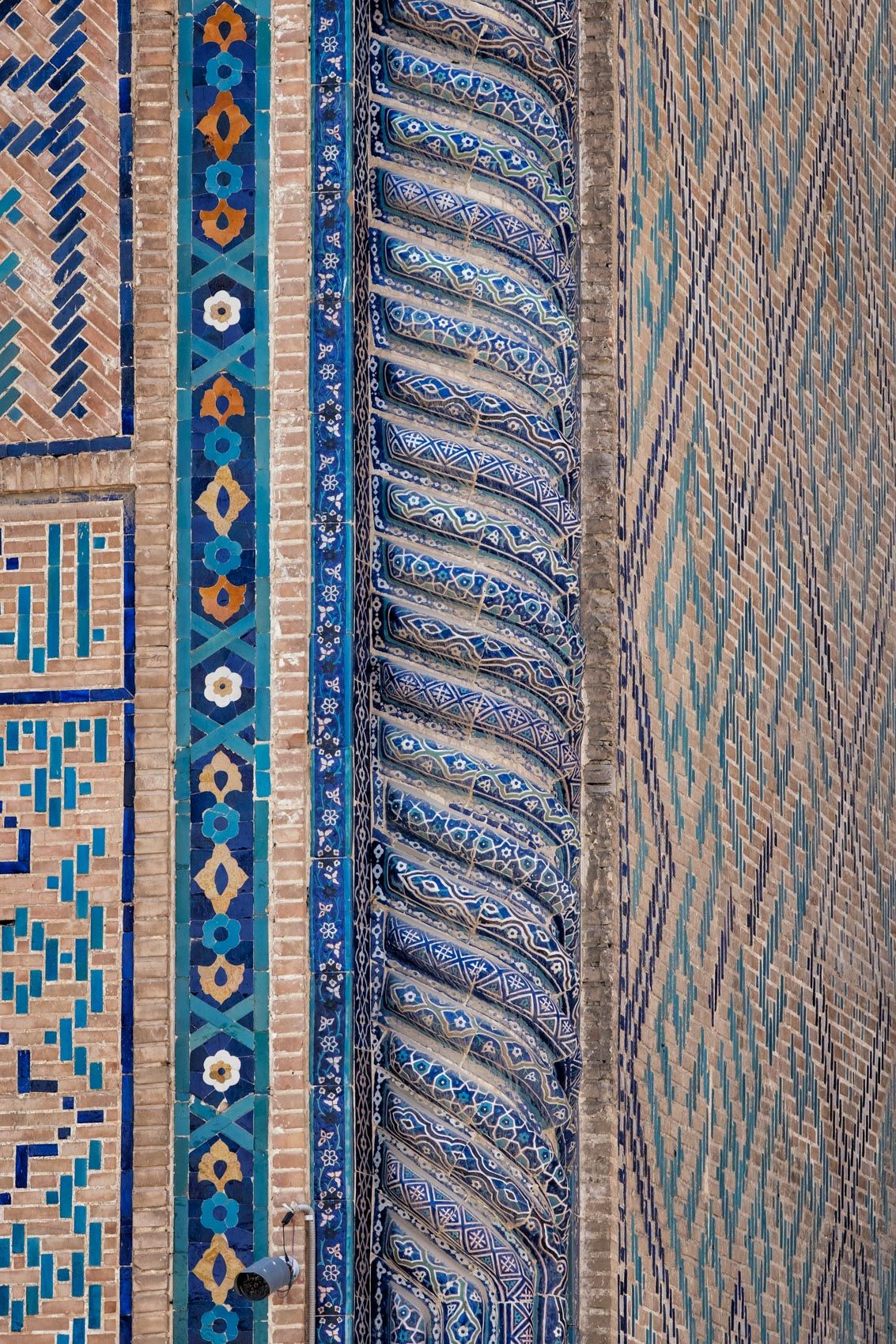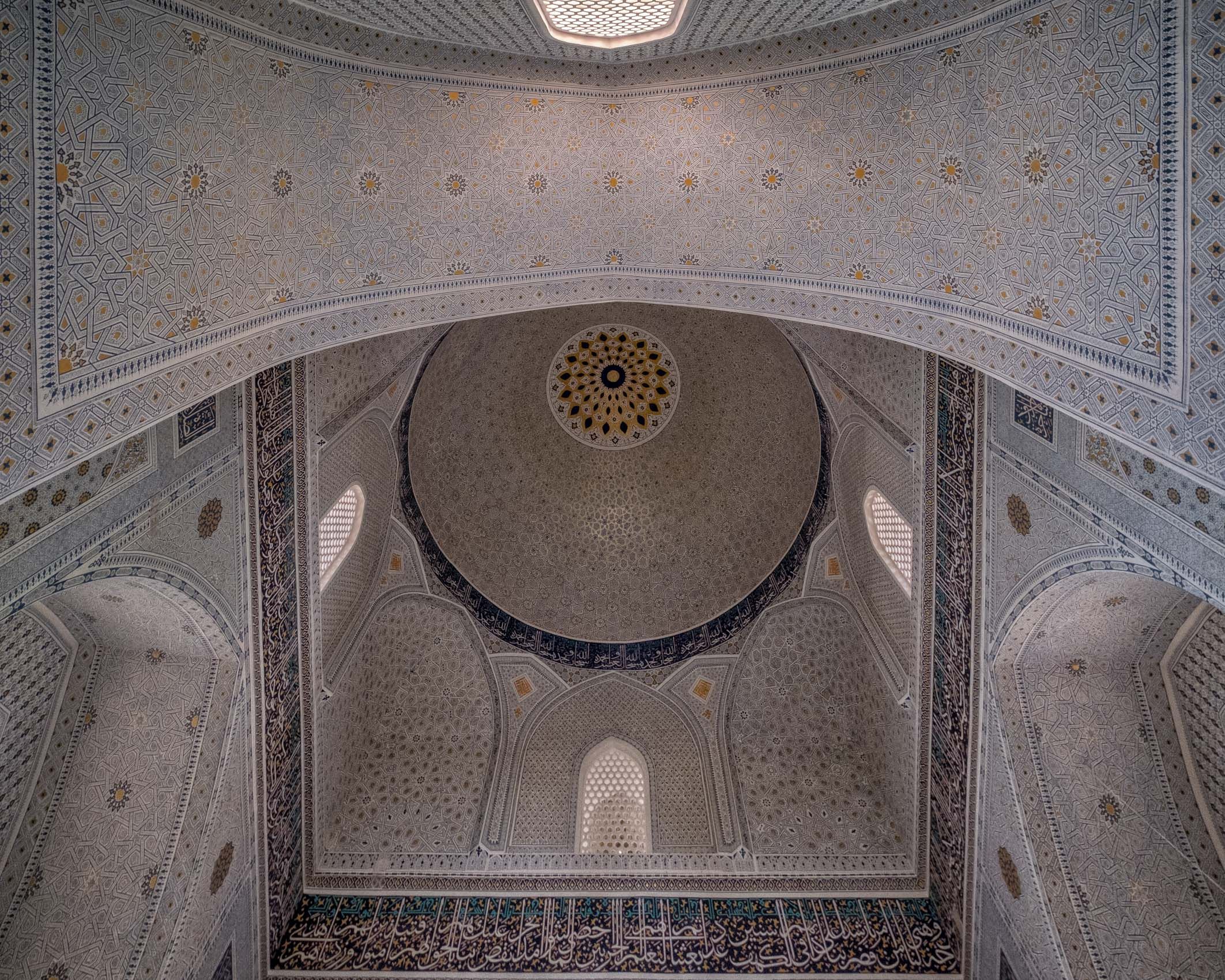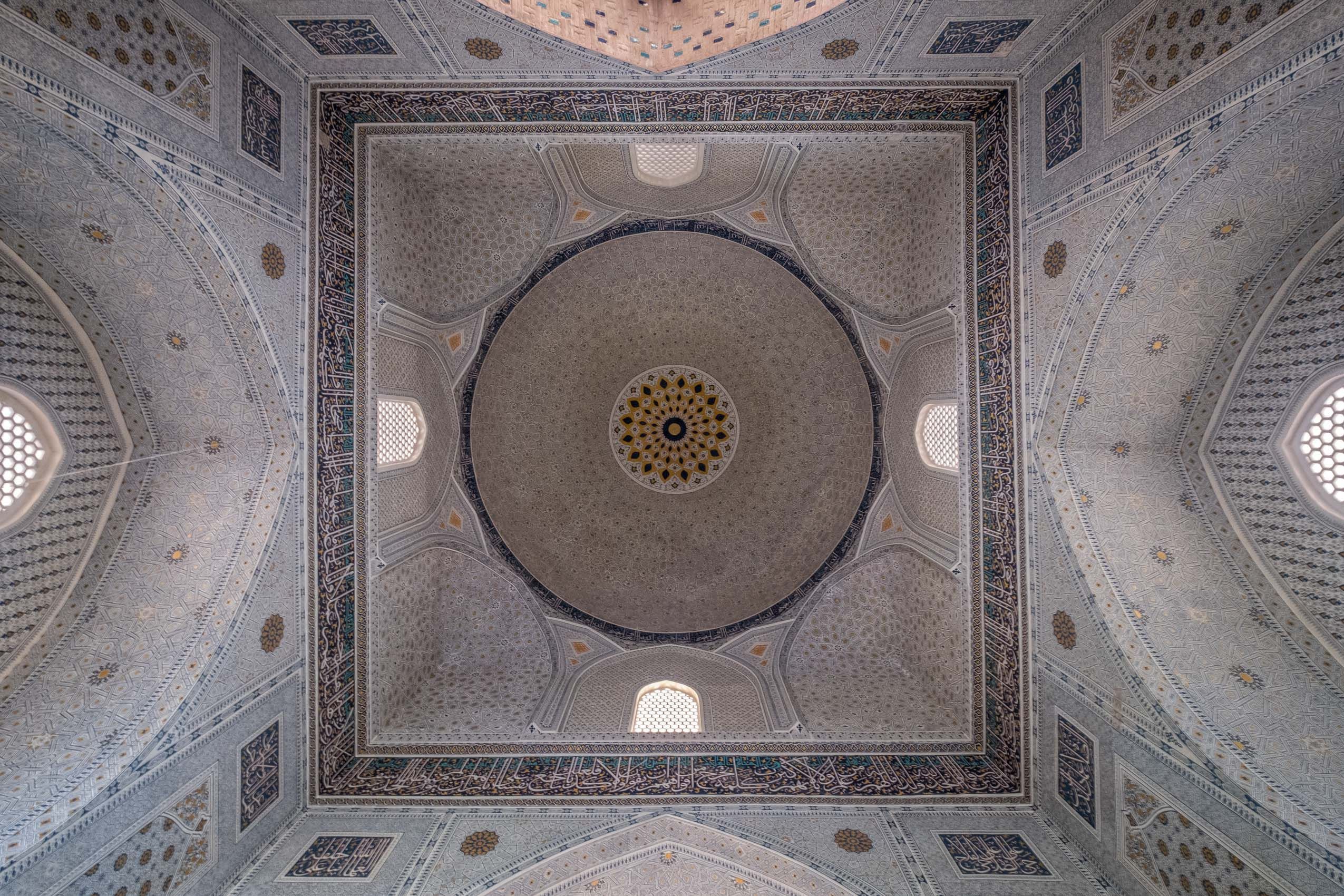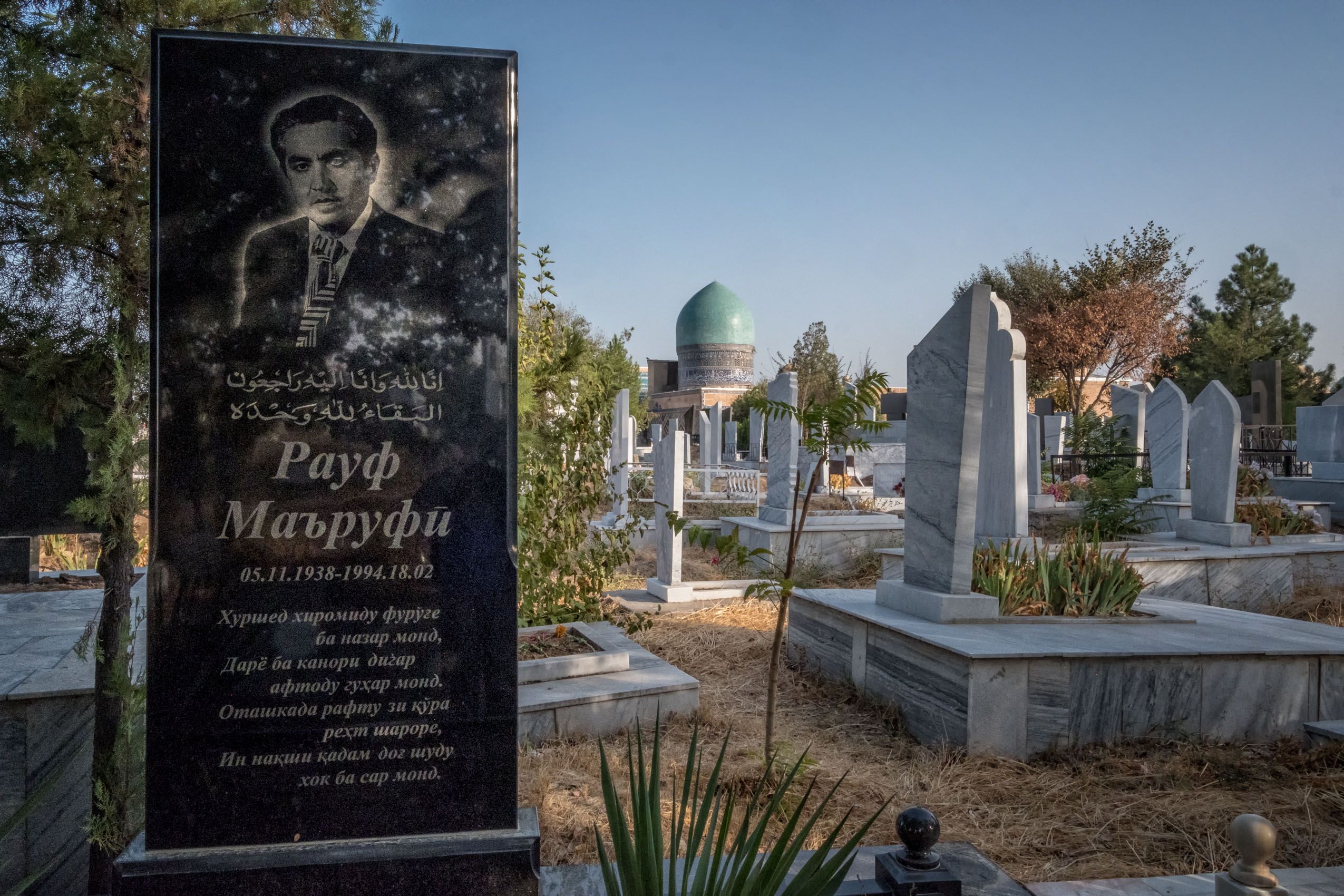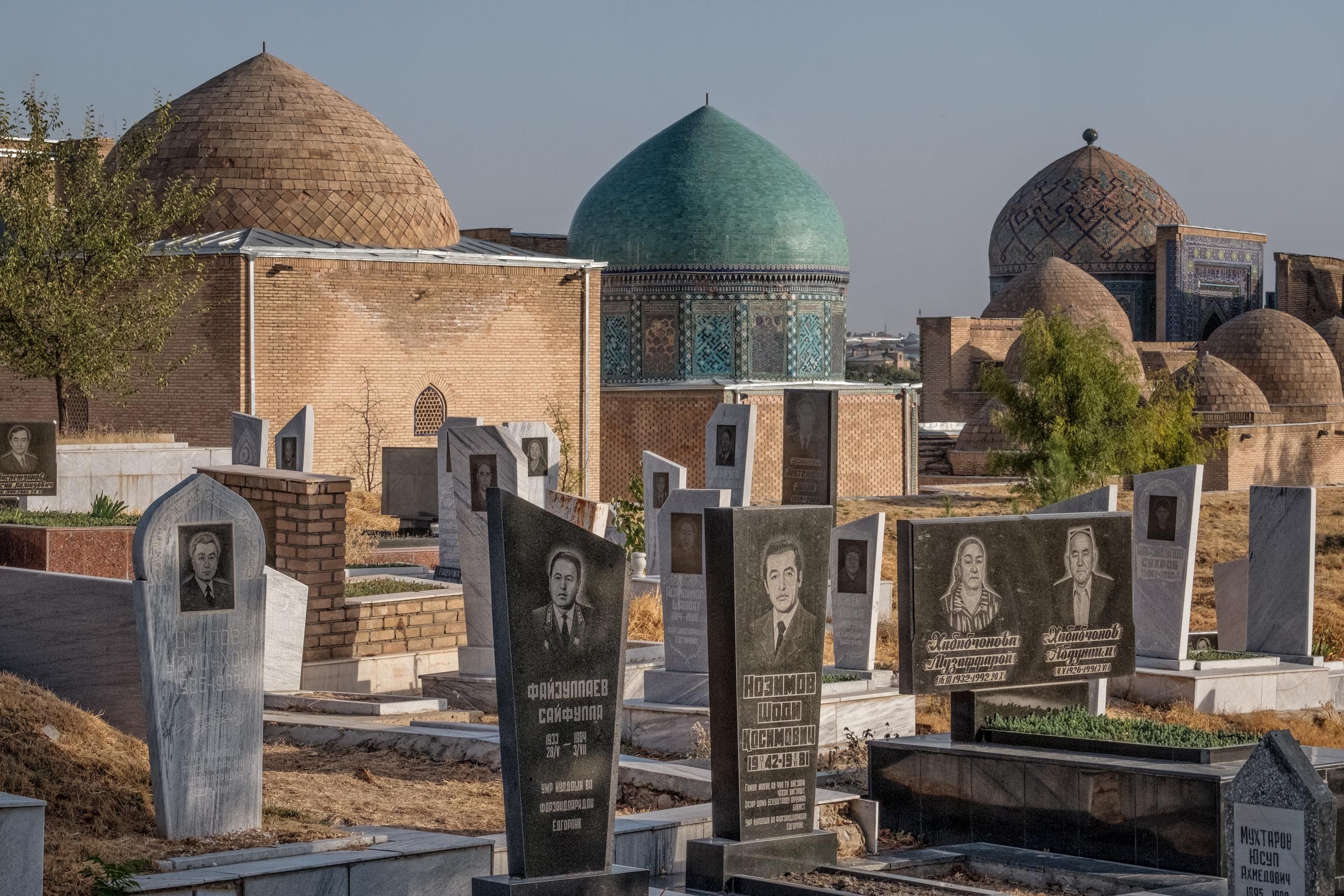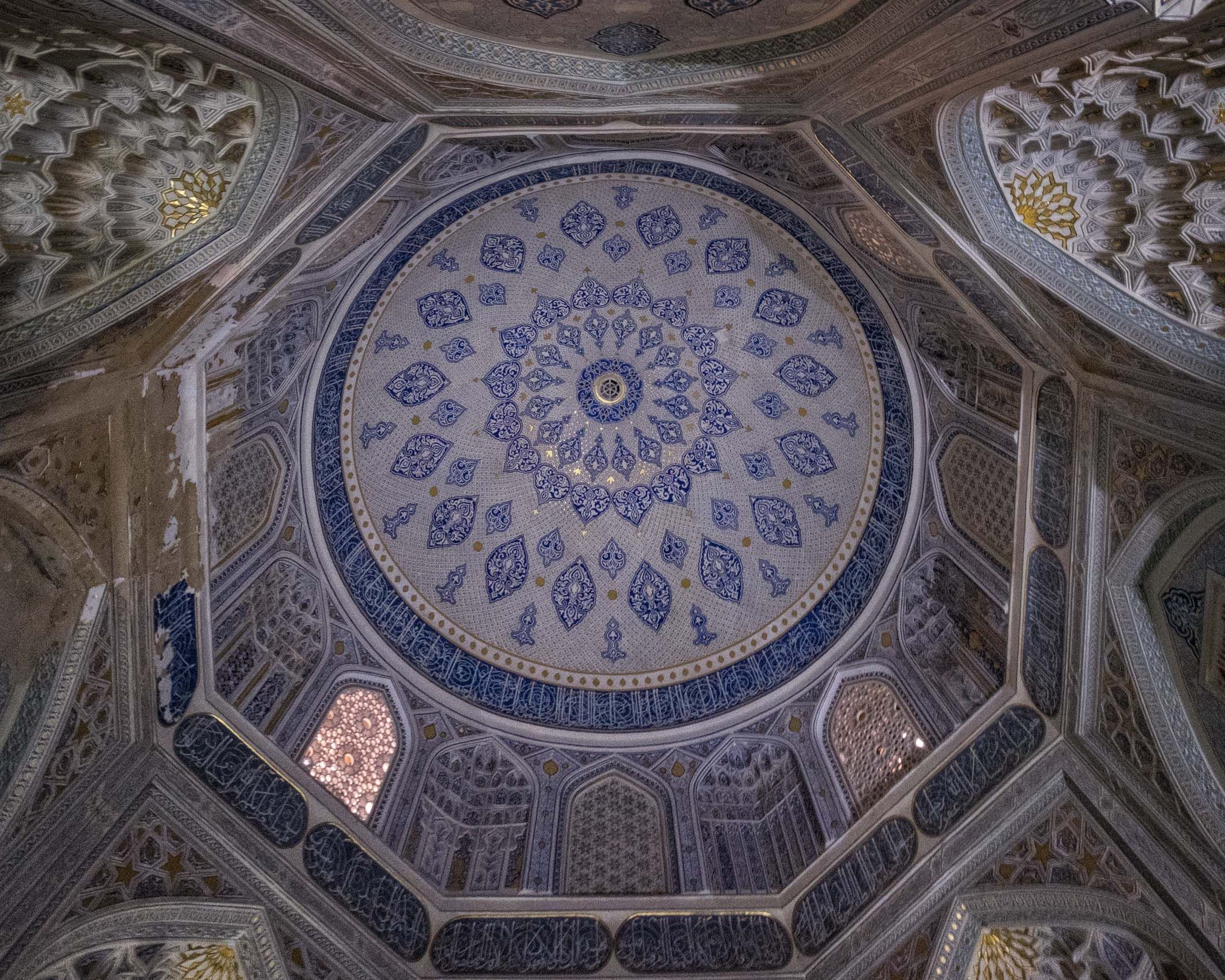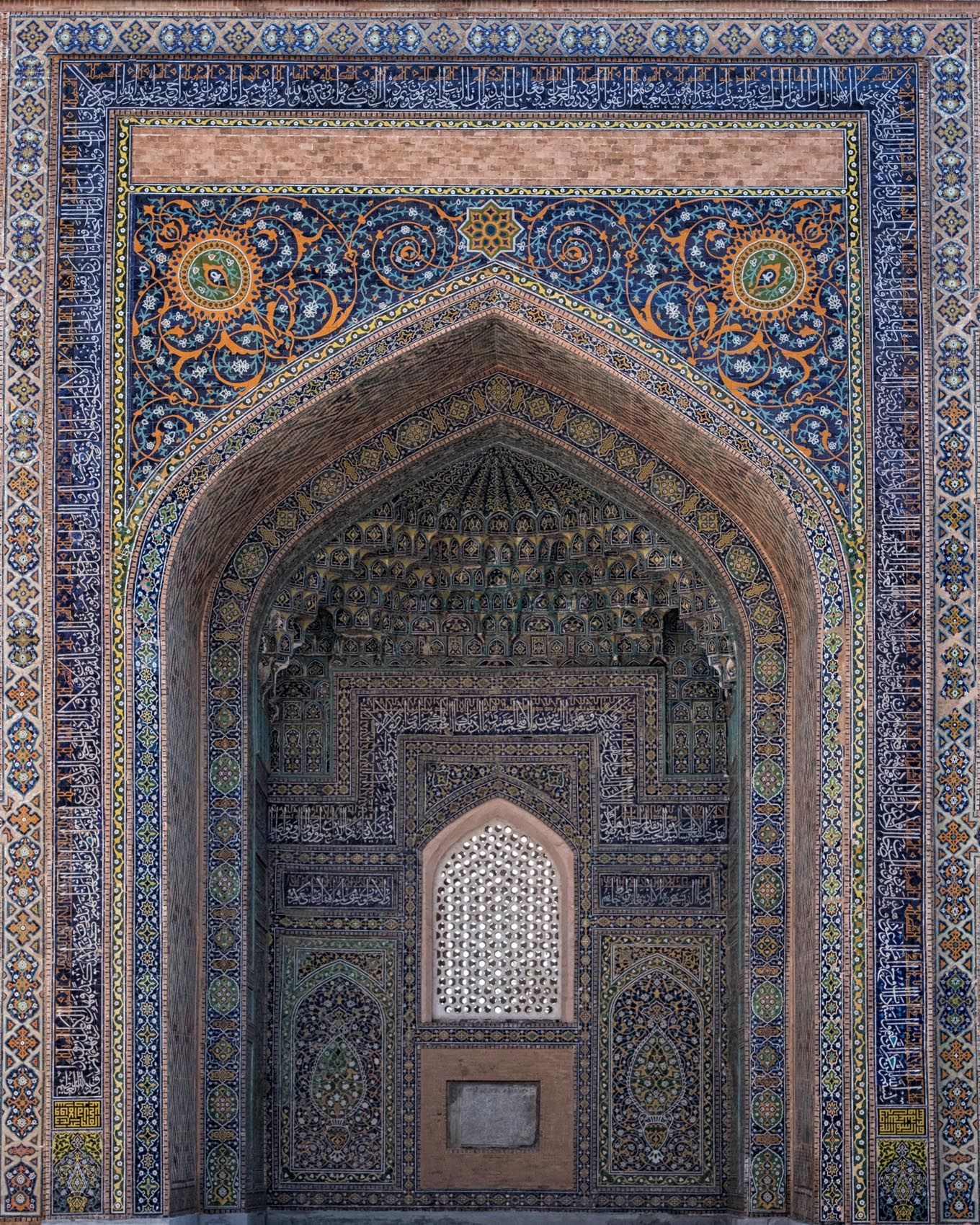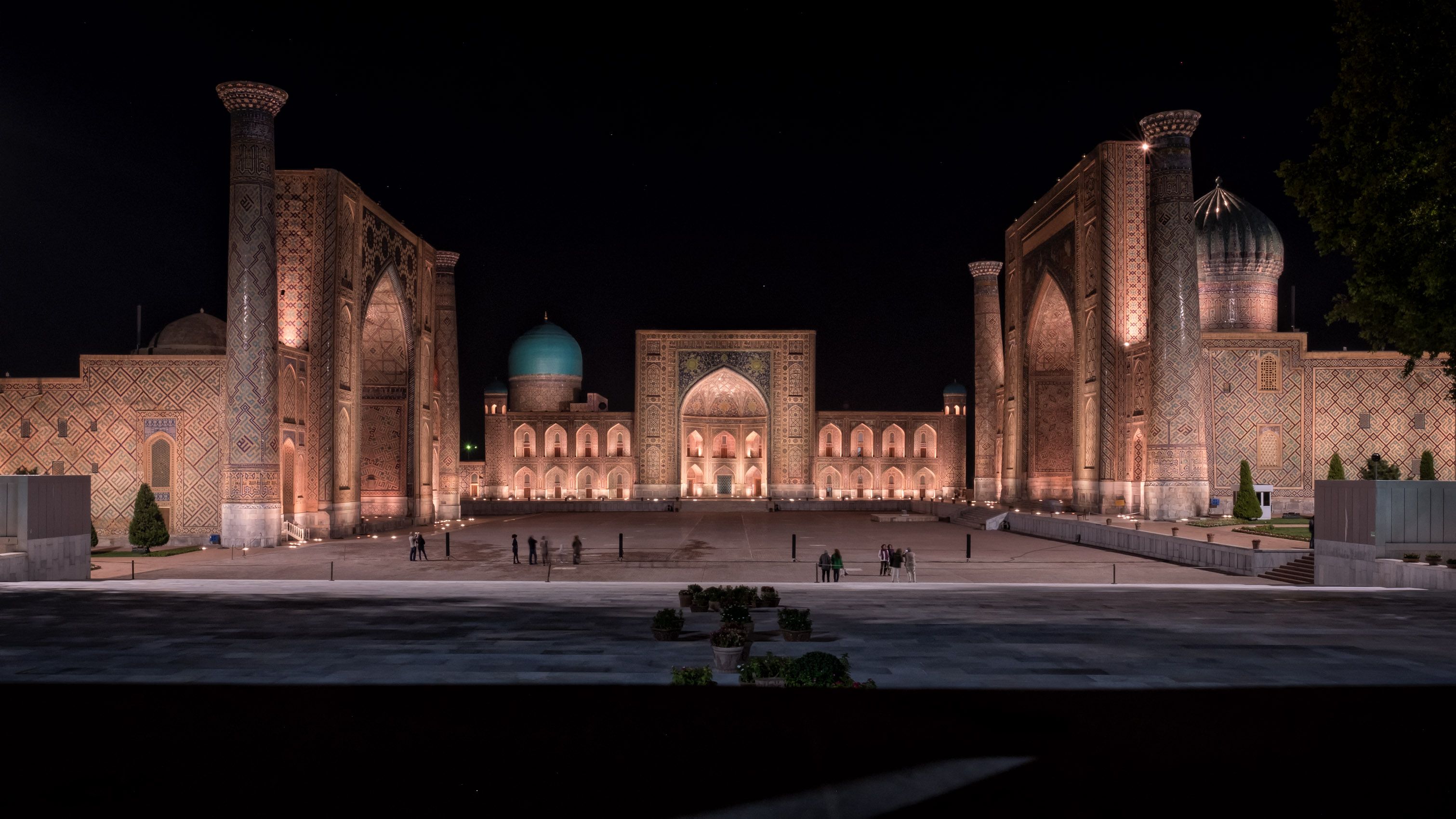UZBEKISTAN: Cities of the Silk Road III—Samarkand
Samarkand’s illustrious history stretches back at least two and a half thousand years. It was already a fabled destination, the capital of the Sogdian Empire, when Alexander the Great conquered it in 329 BC. Between the sixth and thirteenth centuries, it grew to be a great metropolis under a succession of ruling groups, a principle hub of the Silk Road at the crossroads of China, India, and Persia. Although destroyed by Chingghis Khan in 1220, within a hundred and fifty years it was flowering again as the capital of Timur’s empire. Under Timur and his descendants, it reached new heights as a cultural and economic center of central Asia. As a consequence of subsequent economic decline and periodic earthquakes, much of the old city’s magnificent architecture was severely degraded by the beginning of the twentieth century but subsequent extensive Soviet restoration projects did much to reveal once again the harmonious beauty of the tiled mosques, madrassas, leaning minarets, and mausoleums that fill the oldest parts of what is today Uzbekistan’s second largest city. For its Timurid monuments, the city has been designated a UNESCO World Heritage site.










